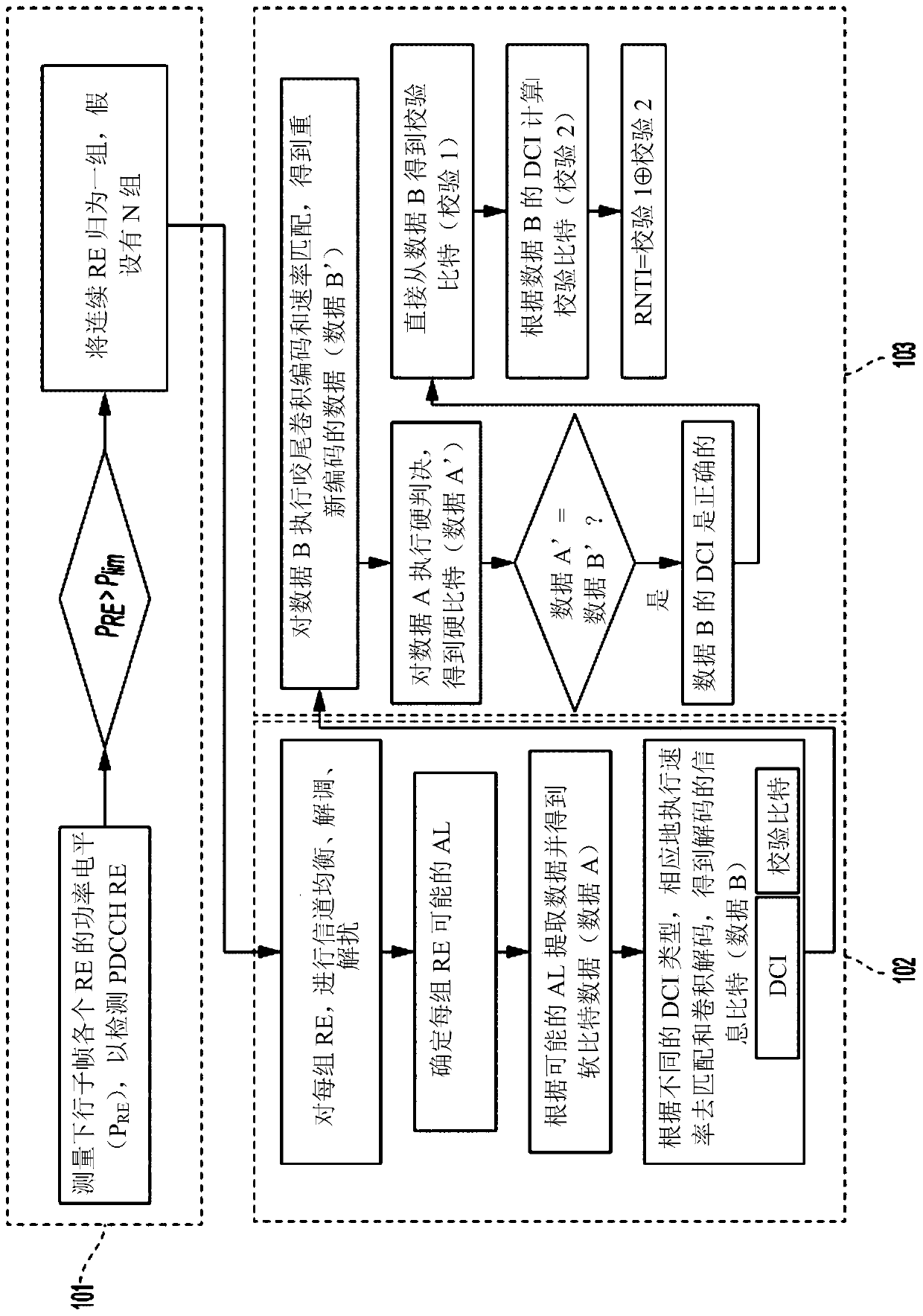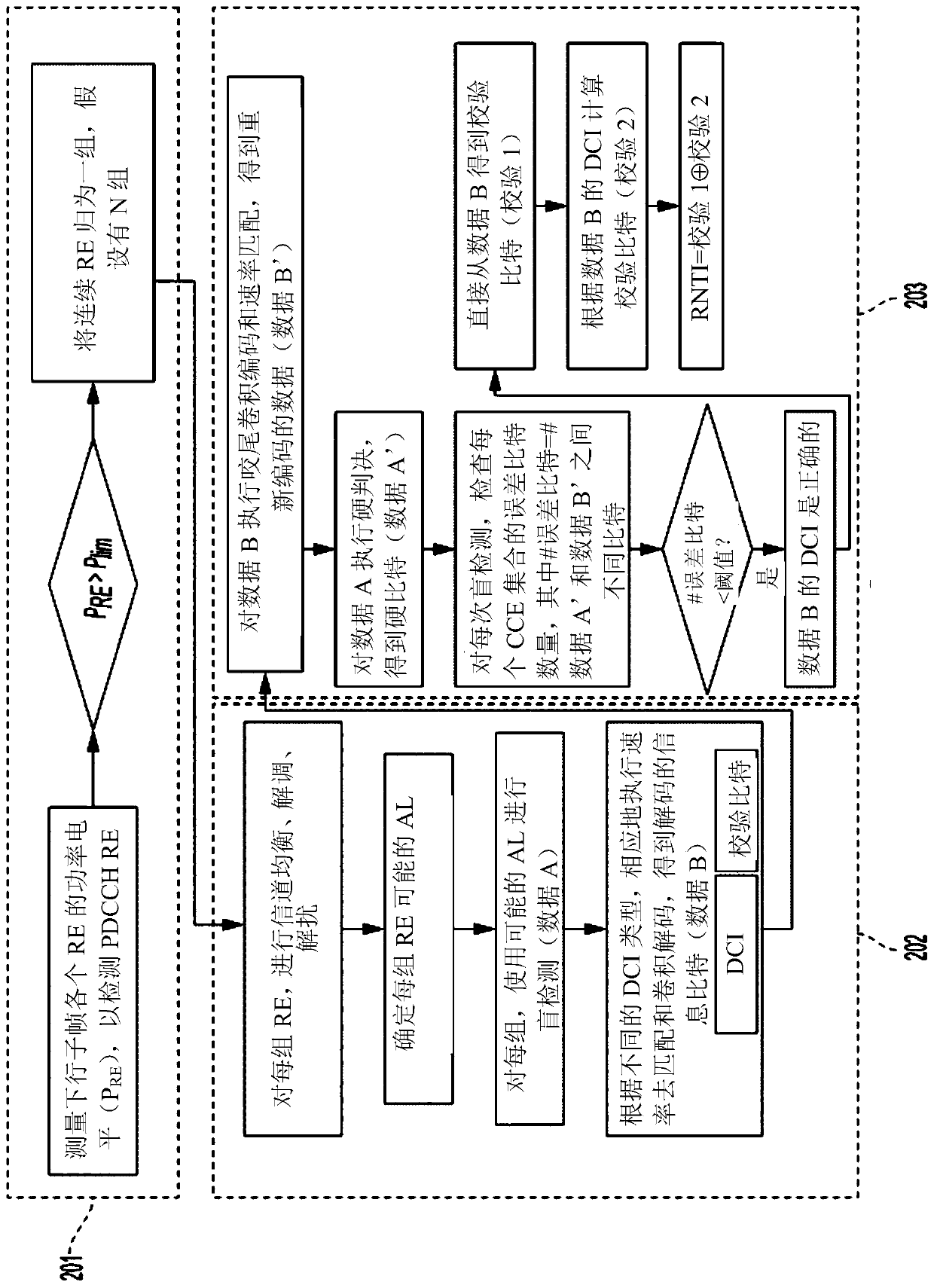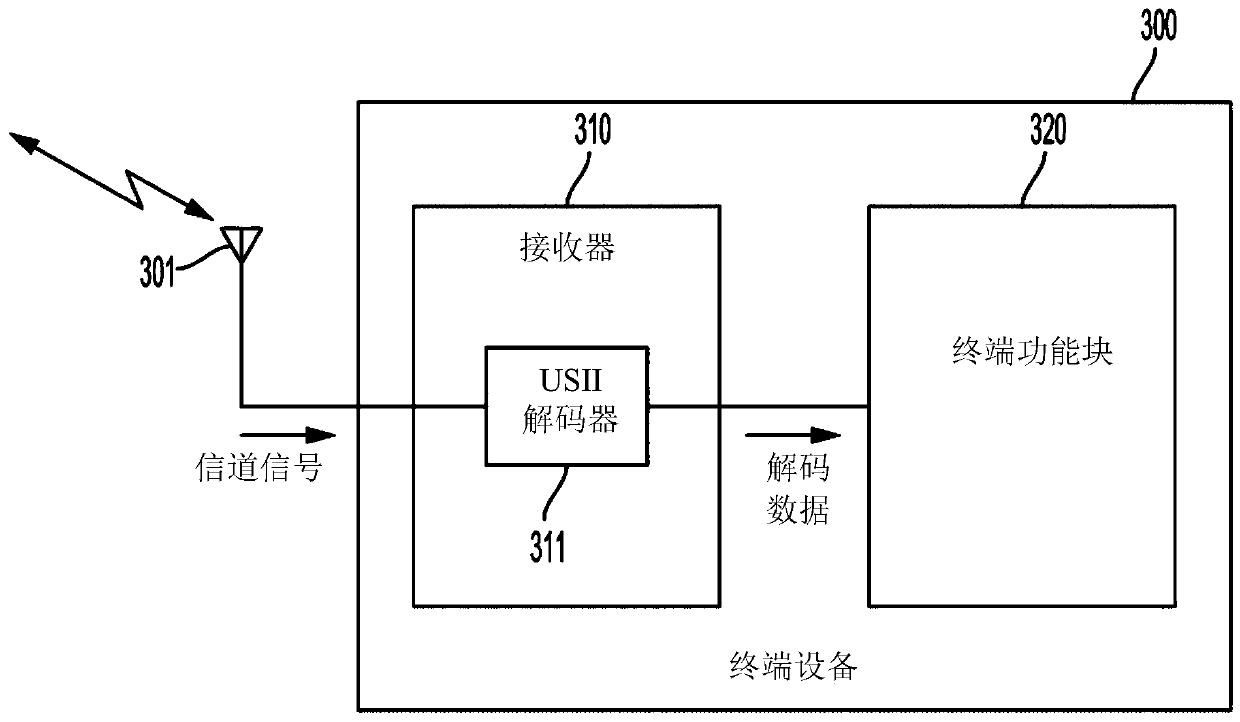Channel signal decoding using power detection and unknown station identification information based on redundancy reduction-based error check
A technology for channel signals and identification information, applied in the directions of multiple use of transmission paths, error prevention, digital transmission systems, etc., and can solve problems such as errors, information loss, and incorrect RNTI and DCI.
- Summary
- Abstract
- Description
- Claims
- Application Information
AI Technical Summary
Problems solved by technology
Method used
Image
Examples
Embodiment Construction
[0024] image 3 An exemplary embodiment of an Unknown Site Identification Information (USII) decoder showing the inventive concept. In the illustrated embodiment, the terminal equipment (TE) 300 includes a communication device, such as a mobile phone device, UE, network node, network sniffer, vehicle-to-everything (V2X) unit, etc., which operates in a wireless network, such as a cellular wireless network (such as 4G cellular network system). TE300 is shown to include a number of functional blocks for performing its various functions. For example, the TE 300 of the illustrated embodiment includes a receiver 310 for providing received signal processing and providing the received signal and / or information extracted therefrom to a terminal functional block 320, which may include, for example, various data slots, control elements, user interface etc. Although the receiver 310 of the TE 300 is described as providing receive signal processing, it should be understood that the funct...
PUM
 Login to View More
Login to View More Abstract
Description
Claims
Application Information
 Login to View More
Login to View More - R&D
- Intellectual Property
- Life Sciences
- Materials
- Tech Scout
- Unparalleled Data Quality
- Higher Quality Content
- 60% Fewer Hallucinations
Browse by: Latest US Patents, China's latest patents, Technical Efficacy Thesaurus, Application Domain, Technology Topic, Popular Technical Reports.
© 2025 PatSnap. All rights reserved.Legal|Privacy policy|Modern Slavery Act Transparency Statement|Sitemap|About US| Contact US: help@patsnap.com



